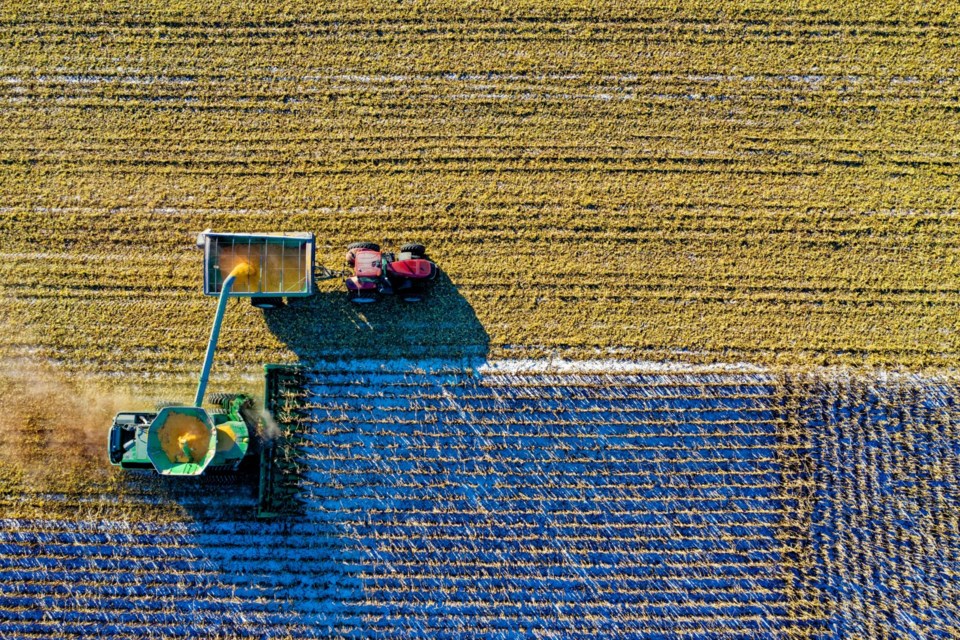ASSINIBOIA — It was another dry year for most of the southwest, but there was more rain than the year before, which is a trend producers hope continues. Many crops had adequate moisture during May and June, but there was very limited rainfall in July which quickly dried topsoil and stressed crops. On top of the dry conditions, there was heavy grasshopper and gopher activity in some areas that damaged crops and lowered yield potential. Crop yields and quality vary in the region largely based on moisture received during the growing season and seeding dates. Earlier seeded crops were generally better than later seeded crops.
Yields for all crop types in the southwest are lower than provincial averages, which is usually expected given the dry climate. The early season moisture gave crops a boost which resulted in yields this year being closer to provincial averages relative to 2023 yields. Producers are overall disappointed with crop yields and are hoping next year will be different. On a positive note, crop quality was good for some crops in the southwest. Most oilseed and pulse crops were graded in the top two categories. Many cereal crops were graded in the top two categories as well, but there were also significant portions that were graded in the 3 CW category and lower.
The southwest had the highest increase in fall cereal crop acres this year. Winter wheat acres increased three per cent and fall rye acres increased one per cent from last year. Producers are hoping these crops can benefit from early moisture next spring to mitigate some risk from potentially dry conditions next year.
Despite the disappointing crop yields, silage yields in the southwest were the highest in Saskatchewan this year. Silage crops averaged 8.5 tons per acre, which is well above the provincial average and more than double last year’s average yield of 3.6 tons per acre. Unfortunately, the same can’t be said for hay yields, as they were the lowest in the province this year. Greenfeed had the highest yields on dryland with an average of two tons per acre, followed by brome hay at 1.41 tons per acre, alfalfa at 1.21 tons per acre, baled forage at 1.2 tons per acre and tame hay at 1.12 tons per acre. Yields were higher under irrigation with alfalfa yielding 3.27 tons per acre, brome hay yielding 3.2 tons per acre, greenfeed yielding three tons per acre and baled forage yielding two tons per acre. Even though hay yields in the southwest are some of the lowest in the province, they are still significantly higher than 2023 yields.
Producers were happy with the quality of their hay as 12 per cent was excellent, 77 per cent was good, 10 per cent was fair and only one per cent was poor quality. Only a few producers were able to get a second cut and the quality was excellent. The southwest has some of the highest hay prices in Saskatchewan. The prices for each type of hay are more expensive than average provincial prices by $10 or more per ton.
The southwest was dry in July and August, but many areas in the region received a lot of rain in September, which helped soil moisture conditions at the time. Since then, there has been limited rainfall and strong winds, which is causing topsoil moisture to decline. Cropland levels are currently 28 per cent adequate, 59 per cent short and 13 per cent very short. Hayland topsoil moisture is 22 per cent adequate, 56 per cent short and 22 per cent very short. Pasture topsoil moisture is 27 per cent adequate, 47 per cent short and 26 per cent very short.
Pasture conditions in the southwest are in the roughest shape compared to the rest of the province. Currently, 29 per cent of pastures are in good condition, 35 per cent are fair, 22 per cent are poor and 14 per cent are in very poor condition. Pastures in this region need to receive a lot of precipitation before next spring to improve conditions.
Producers in the southwest were the first to start and finish harvest, mainly due to low moisture conditions this year. Post-harvest field work is currently keeping producers busy as they are spraying fields before it gets too cold, picking rocks and cleaning seed for next year. Livestock producers are bringing cattle home for the winter, selling calves and hauling bales.
For more information about Â鶹´«Ã½AVwestern Saskatchewan, explore the .




